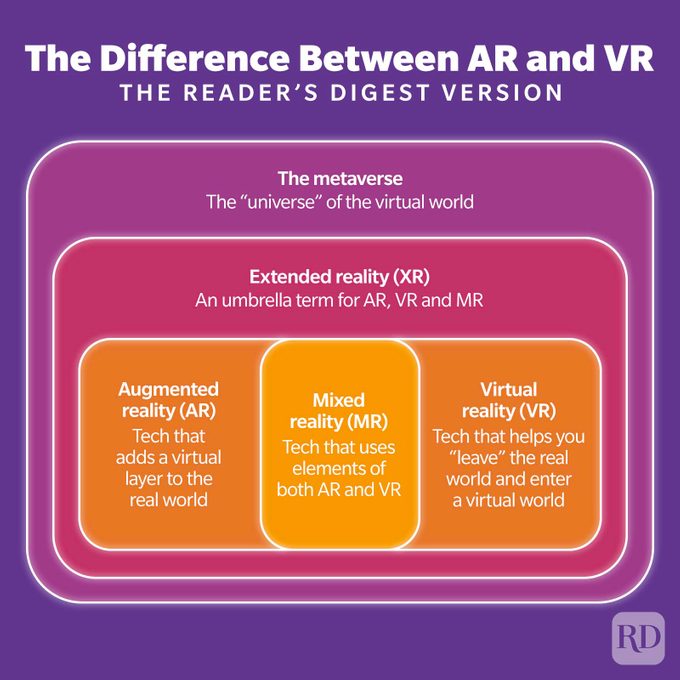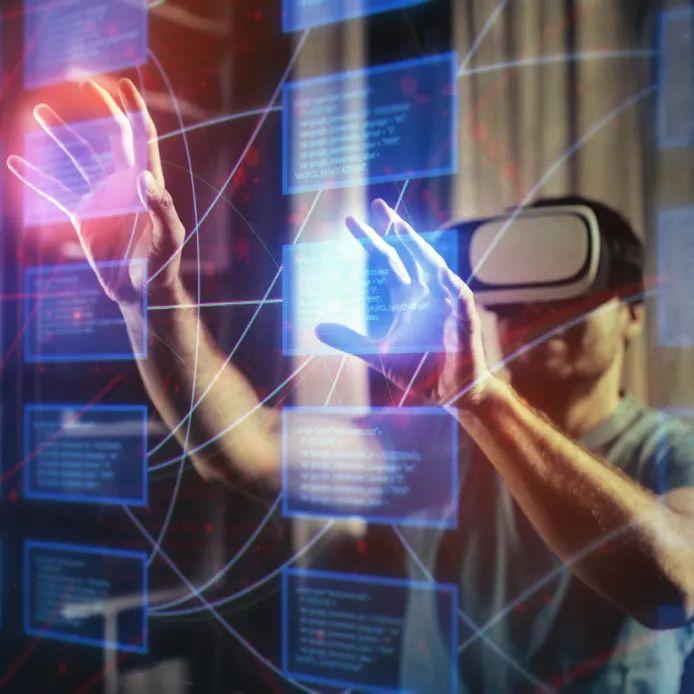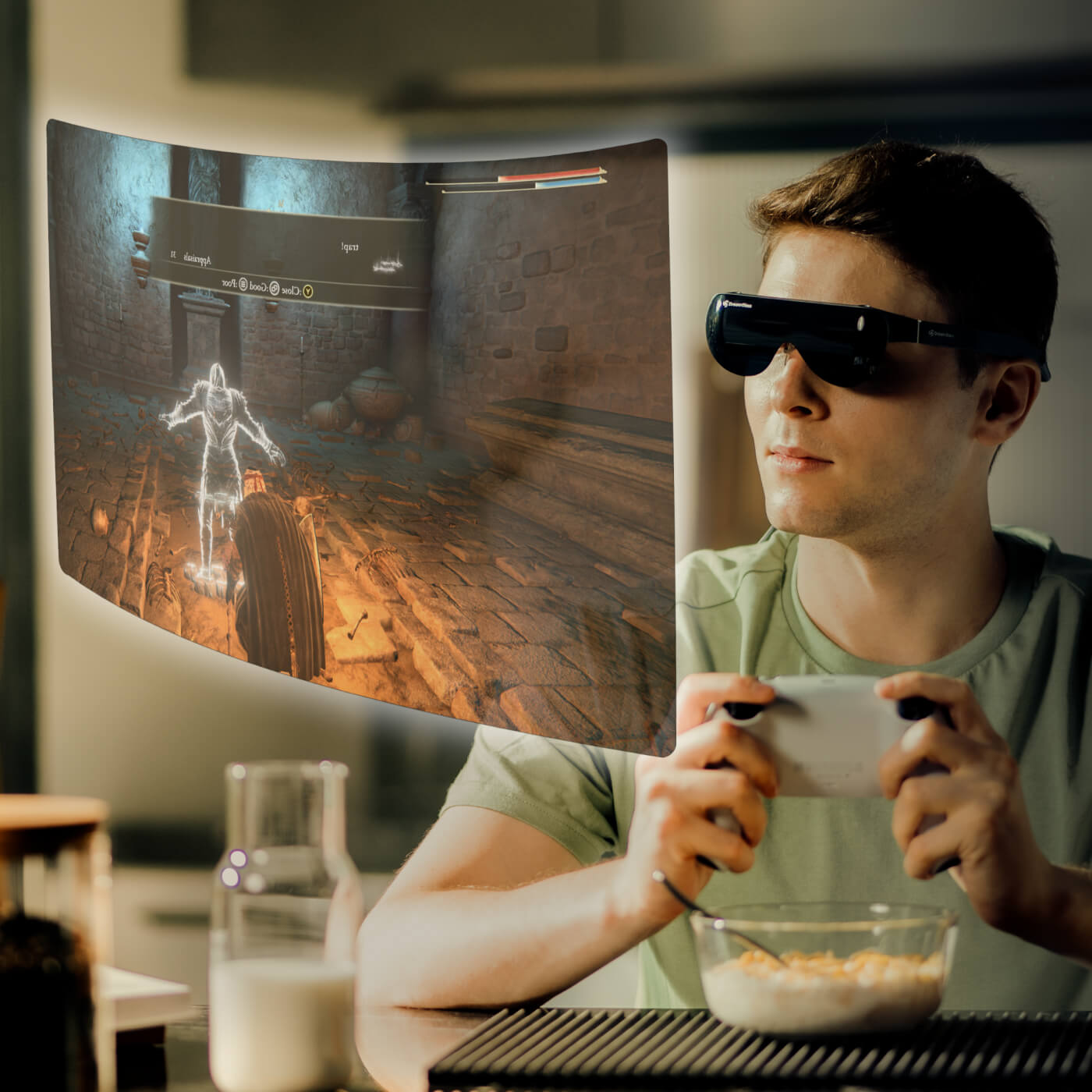--by Charlotte Hilton Andersen

QI YANG/GETTY IMAGES
We have received many questions about how AR and VR are different. And this article written by Charlotte Hilton Andersen in Reader's Digest explains the differences perfectly. So we want to share it with you:
Both augmented reality and virtual reality are becoming more common in our day-to-day lives. Here's how to identify AR vs. VR.
With discussions of the metaverse increasingly cropping up in the news, terms like “augmented reality” and “virtual reality” are becoming mainstream. Of course, it’s still tricky to identify AR vs. VR. So consider this: If you’ve ever used a face filter while messing around on an app or used your phone to identify a plant in your yard, you’re one of the millions of people who use some type of extended reality.
Extended reality, or XR, is the umbrella term for virtual reality, augmented reality and mixed reality. It sounds futuristic, but it’s something you probably use way more than you realize, says Chris Madsen, a senior engineer with Engage XR, a professional virtual reality and augmented reality platform used by many Fortune 500 companies. That’s because certain types of extended reality, such as AR, don’t require a VR headset or other wearables to add a virtual component to the real world; they’re incorporated into the tech we already use.
Need a little help understanding AR vs. VR? We’ve got an easy-to-understand explanation of the tech, plus how the future of AI may transform virtual and augmented reality and change our lives.
What is AR?
Simply put, augmented reality is any tech that brings the virtual world into your real world. Anytime you’re using an app or other technology to add a virtual layer to a real-life activity—like turning on an artificial background on Zoom to cover up your messy room—you’re using augmented reality, says Madsen. It’s a way of adding information, entertainment or experiences to a real-world situation that wouldn’t be possible without technology.
One of the best (and funniest) examples of AR is the string of viral videos of cats watching their owners use a cat-face filter. The animals are confused, often staring big-eyed at the screen and then their owners’ real faces—and their reactions show just how realistic the effect is. The AR filter (found on Snapchat, Instagram, TikTok and other camera phone apps) adds a virtual layer over a real person. And it’s just one of such augmented reality options.
AR isn’t limited to face filters, however. You can use it when shopping, essentially “trying on” makeup or clothes and seeing how various items might fit into your space. You can use it for job training or college courses, says Madsen. You can even use it to get a better sense of your place in the universe: Stargazing apps—those that use your phone screen to identify and highlight constellations when you hold it up to the night sky—are great examples of the ways AR can entertain and educate.
There are countless other examples of augmented reality. In 2014, for instance, Pepsi used an AR bus shelter ad to trick Londoners into thinking they were watching a giant robot stomp down a busy street, an alien spaceship arriving and a tiger on the prowl. Even eight years ago, the graphics were realistic and believable. The military has adopted augmented reality as a way to train soldiers and gain tactical advantages. And the ground crew at Singapore’s Changi Airport uses augmented reality glasses, speeding up load times.
What is VR?
Virtual reality involves “leaving” your real world and entering a virtual place using a headset, controllers and other technology. It can range from simple lightsaber games to elaborate and realistic second worlds in the metaverse.
There are three types of virtual reality.
- Nonimmersive: Programs that create a virtual place that you can look at and navigate using your phone or computer. Think first-person video games, home-decorating apps and all those virtual tours you can take right now for free.
- Semi-immersive: Software and hardware combine to give you a more realistic experience, making the virtual space seem like it’s around you and allowing you to virtually navigate through it. Flight simulators and 3D rides at amusement parks fall under that definition.
- Immersive: Headsets, hand controls, motion detectors and possibly other wearables give you the full otherworldly experience. You can physically walk around a virtual place while interacting with objects and people (both real and simulated) inside the VR world. Oculus and other VR headsets are great examples of immersive VR.
Fully immersive media—tech that stimulates all five senses to give a “real” virtual experience—isn’t available quite yet. But the future of tech is bright, and fully immersive VR is coming faster than you may think. It’ll likely be available to the public within the next few years, says Madsen.
What is MR?
If augmented reality augments the real world and virtual reality immerses you in a virtual world, then what is mixed reality? As the name suggests, it uses elements of both AR and VR. In other words, reality isn’t blocked off (as it is when you don a VR headset), but you’re also not just superimposing virtual elements over your real world. You’re interacting with both the virtual and real worlds.
Microsoft, for instance, has created its HoloLens as an MR device that uses a transparent display to combine virtual and real environments. That has allowed medical students to learn anatomy from a 3D body they can interact with—say, by rotating an organ to get a better view.

RD.COM
AR vs. VR
All the acronyms can be confusing, and as the technology improves, the distinctions become less clear. So here’s what you need to know about augmented reality vs. virtual reality: Where AR brings digital elements into the real world, VR creates an entirely virtual experience. And while AR uses tech you probably already own (like a smartphone or computer), VR requires a headset and other devices, like controllers.
Want to see how a new desk might fit in your home office? Use an AR app to get a visual of the desk in your space. Want a home away from home? Use VR to buy some virtual real estate in the metaverse.
You can debate the merits of AR vs. VR, but one isn’t necessarily better than the other. Both have benefits and drawbacks. The advantage of AR over VR is that it is more easily accessible (usually, you just have to download an app), easier to learn and use, cheaper and responsible for fewer mental and physical problems.
Because VR can feel so real, it can actually change your brain, says Madsen. This could mean you get real-life PTSD from watching a virtual traumatic event. “It’s an area that still needs a lot of research, and both companies and consumers need to use the tech in responsible ways,” he says.
Of course, the realism of virtual reality is its top advantage. Augmented reality can’t come close to the immersive experience of using VR.
The future of virtual and augmented reality
At the moment, gaming is the most popular use of VR and AR, and the industry is only expected to grow. In fact, one estimate says the market may hit $92 billion in the next five years. But more and more industries beyond gaming are embracing the technology and finding ways to use it in daily life, says Madsen.
And since all forms of extended reality exist in the metaverse—the “universe” of the virtual world, which is founded on the internet and isn’t owned by a single country or corporation—you can bet industries will adopt and expand AR, VR and MR even more in the future.
These are just a fraction of the uses for AR and VR:
- Gaming
- Job training
- Educational courses
- Work meetings
- Medical appointments
- Therapy
- Team building
- Travel (like virtual tours of bucket-list attractions you can’t get to in person)
- Space travel (you can tour the best virtual space exhibits or try NASA’s Spacecraft AR app)
- Social activities (think group games or chatting)
- Dating
- Shopping
As artificial intelligence opens the door to new and innovative technologies, the possibilities will grow. Imagine a virtual world in which the very real food in front of your looks, tastes and smells like whichever food you’ve ordered in virtual reality. Imagine wearing AR glasses, glancing at a lamp in your living room and turning it on with a blink of your eyes. We may not be there yet, but we’re well on our way.
“We are living through a very exciting time, where things we only dreamed were possible are happening,” says Madsen. “The best part of AR and VR is that it gives every person the ability to be a creator and make their reality what they want it to be.”
Sources:
- Chris Madsen, senior engineer with Engage XR
- Newsflare: “Cats’ hilarious reaction when they see cat filter on owners’ faces”
- BBC News: “Pepsi Max’s Bus Shelter commercial explained”
- Case Western Reserve University: “CWRU takes the stage at Microsoft’s Build conference to show how HoloLens can transform learning”
- Project Nourished: “Our Vision”




